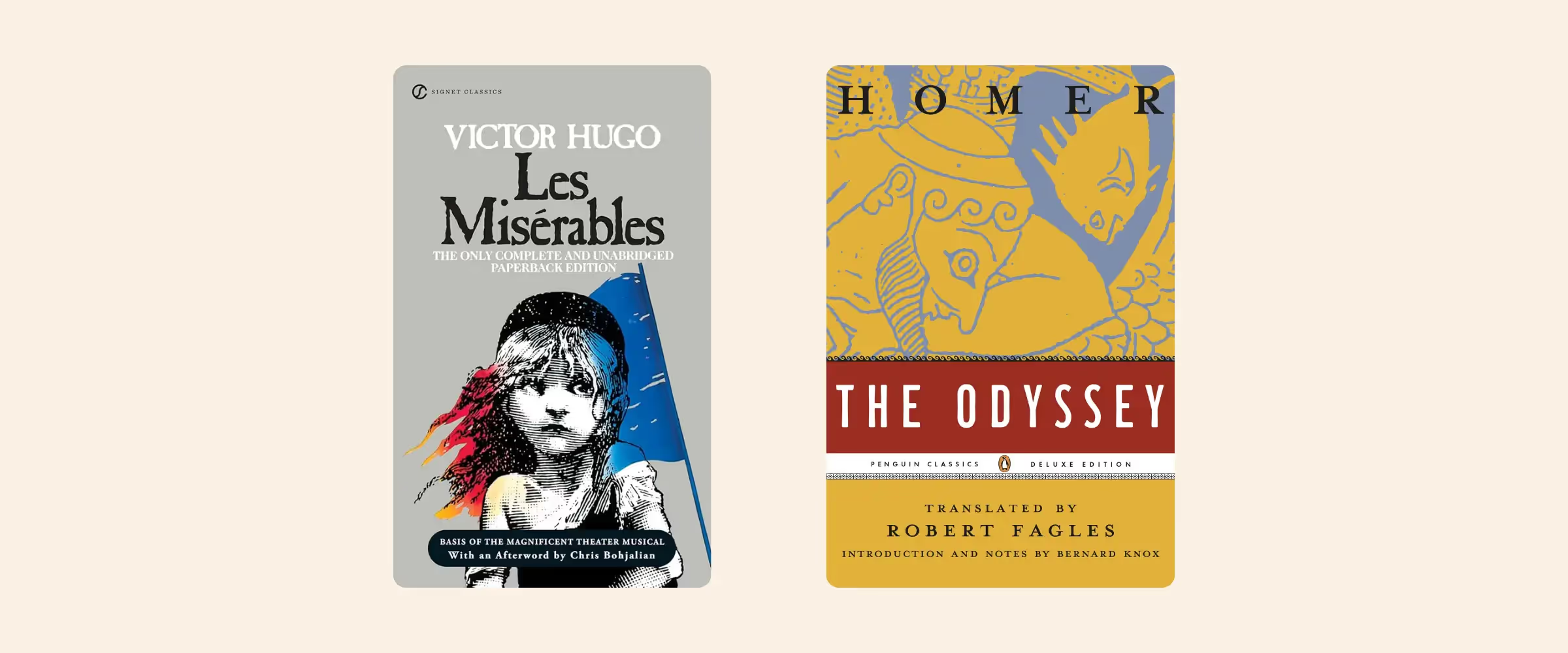You may have heard the term ‘Chekhov’s gun’ (sometimes incorrectly spelled ‘Chekov’s gun’) thrown around in conversations about effective writing and plot development—particularly if you’re writing crime and suspense. But do you know what the Chekhov’s gun principle really is and how it might influence your storytelling?
In this blog post, we delve into the principle of Chekhov’s gun, what it means, what it doesn’t mean, and how you might use it in your story.
Let’s explore!
.avif)
Who was Anton Chekhov?
Before getting into the basics, let’s see who came up with the principle and why we should pay any mind to it.
Anton Chekhov was a nineteenth-century Russian playwright and writer of short stories, considered by many to be one of the greatest writers of all time and a forefather of the modernist movement in theater. He influenced writers around the world directly through mentorship and indirectly through his incredible literary output.
What is Chekhov’s gun?
The term Chekhov’s gun refers to a pretty simple idea—a writing principle stating that if you draw attention to an extraneous component or particular detail in a scene (particularly toward the start of the story), it should play a crucial part in the overall narrative.
Here’s how Chekhov wrote about it:
Remove everything that has no relevance to the story... If you say in the first chapter that there is a rifle hanging on the wall, in the second or third chapter it absolutely must go off. If it’s not going to be fired, it shouldn’t be hanging there.
—Anton Chekhov
Of course, you might have a story in which there’s really no need to have a loaded rifle hanging on the wall in one of your earlier scenes. That doesn’t mean the principle can’t be useful to you: there’s no need for a literal gun to appear. It’s really about avoiding too many red herrings, unnecessary elements, false promises you don’t mean to keep, or deus ex machina.
Rather than being a plot device in and of itself, this is a writing practice that can streamline and sharpen your prose. It’s about honoring the unspoken agreement between the reader and the writer, and meeting audience expectations.
Chekhov’s gun vs foreshadowing
Although Chekhov’s gun is a principle rather than a technique, it’s often bound up with another literary device: foreshadowing. Following the principle of Chekhov’s gun can keep foreshadowing front-of-mind as you write.
If you have a weapon on the wall, or your main character carries a loaded rifle as they leave the house in your first chapter, your reader’s spidey senses might be tingling with a strong inkling that we’ll see that same gun fired in the second or third chapter.
But the element introduced needn’t be a gun. You might show a compass that doesn’t point north, as in Pirates of the Caribbean, a broken mirror, or an unopened bottle of wine.
It works as a dramatic principle, too. In a play, it might be a stage prop that doesn’t quite belong or something the actors draw attention to (even if it’s by failing to mention it)—an empty crib, a sack, a pair of boots... This seemingly unimportant element might not be immediately explained, but according to Chekhov, if it appears in the first act, we should understand its significance by the final act.

The perfect example of this principle at work is seen, unsurprisingly, in one of Chekhov’s own plays. In Act I of The Seagull, the main character carries a rifle onto the stage. By the last act, he has used that same weapon to commit suicide. Such a detail might appear irrelevant or superfluous if it weren’t crucial to the overall story by the end.
Examples of Chekhov’s gun
There are examples of this principle in literature from almost every genre. It’s not just clue-laden mysteries or action-packed spy thrillers; some writers even use Chekhov’s gun in short stories. Let’s consider a few. (Beware: spoilers ahead!)
The Paddington series
Consider Paddington Bear and the marmalade sandwich he keeps under his hat. Yes, it serves in his general character development, but it’s also particularly useful when he needs to get out of a jam (if you’ll forgive the pun). It might seem small or silly, but it’s a great example of Chekhov’s gun.
The Princess Diaries by Meg Cabot
In the YA smash hit The Princess Diaries, beauty guru Paolo casually dismisses the need for confidentiality agreements—he knows how to keep a secret. But it’s not long before he’s blabbed to the paparazzi, and everyone in the country (not to mention Mia’s school) knows exactly who she is.
The Hunger Games series
Among many examples from the Hunger Games series, in Catching Fire, we learn several times that Finnick counts the bread they receive as gifts, perhaps to an obsessive degree. Later, we discover he was in on District 13’s plan to break the tributes out, and bread was a signal. There was a secret code, with the district the bread came from indicating the day they’d be rescued, while the number of rolls signaled the hour.

The Harry Potter series
One example of a ‘rifle on the stage’ with a long wait to the payoff in this series is Albus Dumbledore’s nose being described as ‘looking as though it had been broken at least twice’ at the beginning of book one. It’s not until Deathly Hallows that we find out it was broken by his brother Aberforth at their sister Ariana’s funeral.
Another great Dumbledore-related ‘gun’ is the lemon drop (‘sherbet lemon’ in the British text) he offers to McGonagall early in the first novel. It’s a detail that might bypass the casual reader’s attention, but Dumbledore goes on to use it as the password for his office in Chamber of Secrets, establishing a pattern of using confectionery for his office passwords, which ultimately means Harry can guess the password and enter the office in Goblet of Fire.
Desperation by Stephen King
For another example of how to place a loaded rifle (metaphorically speaking) in a story, let’s look to the master storyteller Stephen King. In Desperation, a shotgun shell seen earlier becomes crucial as we sink into the dramatic tension of the final few pages: the characters use it as a blasting cap to detonate explosives that trap a demon in an abandoned mine.
Howards End by E.M. Forster
You can see other examples of Chekhov’s gun in classic literary fiction. Remember the Schlegel family’s sword in E.M. Forster’s Howards End ? Introduced early on, it’s something the reader may not pay close attention to, but eventually, Charles Wilcox wields it on Leonard Bast.

Les Misérables by Victor Hugo
There are examples of Chekhov’s gun that predate Chekhov himself! In Victor Hugo’s Les Misérables, Éponine writes the sentence ‘the cops are here’ to prove to Marius that she is literate. Later, Marius uses that note to save Leblanc’s life.
The Odyssey by Homer
There are much earlier examples, too. The first book of The Odyssey references spears on the wall of Odysseus’s home. By the end, Odysseus and Telemachus use those spears to kill the suitors that have invaded (could E.M. Forster have found some inspiration here...?).

How you can use Chekhov’s gun
Whether you’re working on a short story, a novel, a play, or a screenplay, you can keep Chekhov’s gun in mind to add layers to your writing and heighten reader satisfaction.
To get you thinking, here are a few tips on how it might affect your story and how you tell it.

1. Chekhov’s gun isn’t a plot device
Remember: this isn’t a technique and it’s certainly not a prescription. While you might have a plot device that qualifies as a Chekhov’s gun, the idea is simply a theory; a dramatic narrative principle designed to help you economize and focus on the detail within your plot.
It’s less something you set out to do and more something you can choose to follow (or ignore!).
2. Choose your details carefully
This goes to the heart of Chekhov’s point. As you plan, write, or edit your story, think carefully about every detail. Is it self-indulgent—something that looks pretty or sounds symbolic but doesn’t actually bear much relevance to your plot? Or does it actively contribute to the overall plot structure?
If it’s the former, consider (remembering this isn’t a hard and fast rule!) excising the unnecessary detail.
{{blog-banner-2="/blog-banners"}}
3. Not everything needs to be a Chekhov’s gun
Not every detail in your story can serve as a plot device. You should feel free to break the rules sometimes.
What’s more, red herrings and misdirects are often necessary and very intentional. It can be great for plot development to throw the reader off subsequent plot twists and to subvert audience expectations.
Many writers have shown that purposely and thoughtfully defying the principle underlying Chekhov’s gun can be wonderful. It keeps us guessing, piecing things together, and generally allows us to be active participants in your story. And isn’t that half the joy of any story?
Handle your red herrings
That being said, every red herring probably should, in its own way, adhere to the idea underlying Chekhov’s ‘never place a loaded rifle on the stage unless you’re going to use it’ motto. In other words, your red herrings should all have a satisfactory explanation within your narrative.
If a false suspect has muddy shoes and blood on their hands, then at some point before Act III, we need to understand how this character got to be so mucky and why they weren’t the culprit. Give us their alibi!
If you have a great red herring in mind that can throw us off the scent, feel free to include it. Just make sure you’ve done it on purpose and that it makes sense.
4. Introduce important elements early on
One great lesson we can learn from Chekhov’s idea is that it’s powerful to give readers key information quite early in your narrative. This is common in suspense novels and is a key part of our advice on pacing a novel. Don’t hold everything back for one huge reveal at the end—that can make for an unsatisfying read!
5. Foreshadow your plot twists
We’ve made the point that Chekhov’s gun doesn’t refer solely to an ordinary object or an actual firearm hanging on the wall. It doesn’t have to be a physical object at all; it can be actions your characters take, words they use, unexpected reactions they have, or even just a character trait.
Think about how you can foreshadow plot twists with seemingly small details that will settle in a reader’s mind, making total sense later on.
For example, if your protagonist is married to a serial killer (but your protagonist doesn’t yet know that), you might foreshadow their murderous tendencies by having other characters comment on their unusually travel-heavy work schedule or near-hoarder status (which necessitates the rental of a remote storage facility).
These little details paying off when the twist is revealed is Chekhov’s gun in practice.
.avif)
6. Apply Chekhov’s logic elsewhere
You can take the logic further and apply it to each of your scenes—even each of your chapters. This is something we recommend in The Big Edit: consider the purpose and relevance of every scene to your overall narrative.
A practical way to do this is to map out your scenes. Approach this in whatever way works best for you: a spreadsheet, flashcards, maybe a list in your notebook. For each scene, identify the importance of its major elements, then ask yourself what the overall significance is and what questions these specific elements raise or answer.
7. Don’t stick too religiously to Chekhov’s gun
Above all, remember that this is another tool among many in your writing armory. If you treat Chekhov’s gun like a rule and apply it to every inconsequential detail in your novel, you’ll end up with a story that’s contrived, flat, and lifeless, and you’ll lose your audience’s attention. Very often, it’s the unexpected details in an unusual context that make a story feel real and immersive for a reader. Not everything has to have a strict, active purpose in your narrative!
If adhering faithfully to Chekhov’s gun works for your novel: great! Equally, you can include lots of details that don’t hold immense narrative significance but might be right for your story. Remember: tools not rules!
Welcome home, writers. Join us on the world’s best creative writing courses to create, write and complete your book. Sign up and start today.

.avif)

.avif)
.avif)

.avif)